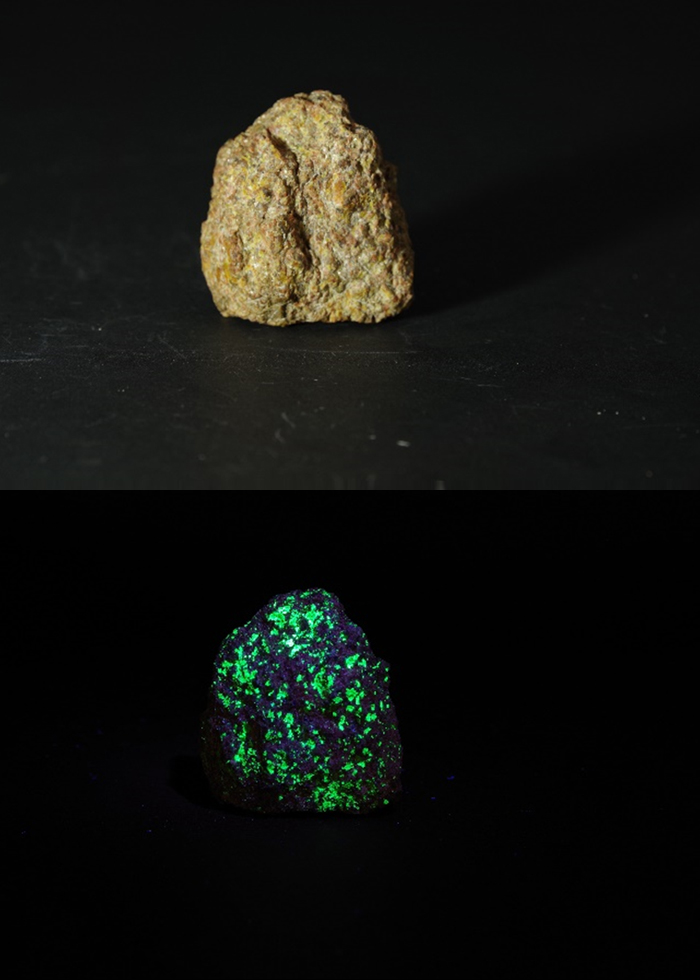Specimen deposited in the collections of the Natural History Museum of the University of Valencia.

Autunite (hydrated calcium uracil phosphate) Ca(UO2)2(PO4)2 ·10H2O, is a highly prized mineral due to its color and fluorescence emitted under ultraviolet light. This fluorescence is provide by the presence of the uranyl ion. Normally it usually shows yellow or green colors and in some cases it has a vitreous shine. The structure is usually fan-shaped, with scaly, tubular aggregate crystals or irregular crusts, although it can also appear as compact masses or rock encrustations. In addition, these crystals present exfoliation and are sometimes scaly, giving a sensation of aggregation.
It is a secondary mineral formed in the oxidation zone of uraninite (UO2) and other minerals derived from uranium, easy to confuse with uranocircite. It is relatively easy to find it in mines or deposits of oxidized uranium, so it can be a Good indicator of its presence.
Autunite is highly prixed by mineral collectors for its color and fluorescence under ultraviolet light. The radioactivity it presents is very low, so it does not influence human health, all the more reason to be collected. It was also used to manufacture the first nuclear weapons, although its real danger lies in the inhalation of autunite dust.
Its name derives from the town of Autun, in France, where it is frequent. In Sapin it is the most abundant uranium ore, found in localities such as Andújar (Jaén), in Sierra Albarrana (Córdona) and other locations such as Navarredonda (Ávila) and Millanes (Cáceres) or Albuquerque (Badajoz).

















